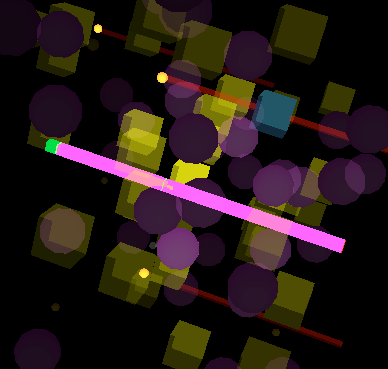Modeling
From 2008.igem.org
(Difference between revisions)
| Line 12: | Line 12: | ||
|} | |} | ||
| - | {| style="background-color:#D1ECAA;" cellpadding="3" cellspacing="1" border="1" bordercolor="#416023" width=" | + | {| style="background-color:#D1ECAA;" cellpadding="3" cellspacing="1" border="1" bordercolor="#416023" width="64%" align="center" |
!align="center"|[[Data_Retrieval_and_Storage|Data Retrieval]] | !align="center"|[[Data_Retrieval_and_Storage|Data Retrieval]] | ||
!align="center"|[[Modeling|Modeling]] | !align="center"|[[Modeling|Modeling]] | ||
| Line 51: | Line 51: | ||
|} | |} | ||
| - | {| style="background-color:#B1E97A;" cellpadding="3" cellspacing="1" border="1" bordercolor="#416023" width=" | + | {| style="background-color:#B1E97A;" cellpadding="3" cellspacing="1" border="1" bordercolor="#416023" width="64%" align="center" |
!align="center"|[[Team:Calgary_Software|Home]] | !align="center"|[[Team:Calgary_Software|Home]] | ||
!align="center"|[[Team:Calgary_Software/Team|The Team]] | !align="center"|[[Team:Calgary_Software/Team|The Team]] | ||
Revision as of 05:46, 25 October 2008

|
| Home | The Team | The Project | Modeling | Notebook |
|---|
| Data Retrieval | Modeling | Evolutionary Algorithm | Graphical User Interface |
|---|
Contents |
mRNA Class
The mRNA class performs all of the functions that mRNA do in living cells and is directly related to the process of transcription and translation. Once an RNA polymerase, which is represented visually as a large violet sphere, binds onto the DNA, the process of transcription occurs and a mRNA is created, as seen in Figure 3.1. Upon the start of transcription, the RNA polymerase turns red signifying that transcription has started. As the process progresses the attached mRNA that is being created gets gradually larger. When transcription finishes, the mRNA is released, it returns to its original violet color, and moves randomly within the space of the model. Because of how the simulation software was created, mRNA could not be represented as a thin ribbon-like shape that is seen in textbooks or other conventional models. Instead, the mRNA is represented visually as a long, thin, red rod. Contained within each mRNA is information required for the sequencing of proteins.
Ribosome Class
Once the mRNA is created, the ribosomes are able to bind to mRNA and perform the process of translation, shown in Figure 3.2. Ribosomes in this simulation are represented as a large yellow cube. In reality, ribosomes are actually two different parts that attach to a mRNA on different sides upon translation. However, for the purposes of this simulation, the ribosome is represented as a single part. As a result, this prevents unnecessary complications and simplifies the computation. Since ribosomes are quite dense and heavy in cells, they are modeled with a relatively heavy mass in the simulation; their velocities and accelerations, as a result, are very small. When a ribosome attaches to an mRNA, the cubic ribosome turns into a teal colour to signify the occurrence of translation. Since the mRNA is now attached to a heavier ribosome, the mRNA slows itself down to move at the same speed relative to the ribosme. When attached, the ribosome continues with translation by moving along the mRNA. Upon completion, protein molecules are released into the cell. In some cases, the mRNA will have coding for multiple protein molecules. As a result, some of the proteins are released during translation instead of at the end. Regardless, after translation has finished the ribosome detaches itself, regaining its yellow colour where it is free to float within the simulation space.
mRBS Class
The mRBS class, which stands for messenger ribosomal binding site, is what links the ribosome and mRNA classes; it is the hub for communication. Functionally, this class is what allows for the process of translation to occur; in addition, it presents the possibility of transcription and translation to occur nearly simultaneously, which is what usually occurs in prokaryotic cells. Visually, the mRBS is represented as a small orange sphere that is attached to the front of a mRNA. This mRBS is the site where translation occurs.
Half Life
To prevent cluttering in the simulation - and to better mimic the reality of prokaryotic cells - half-life was implemented. This idea of half-life is a means that allows for decay in molecules and proteins. Since there is always some kind of decay in a cell, mRNA and other protein molecules within the cell would degrade or disappear in the simulation. However, things such as the RNA polymerase and the ribosomes are not subject to half life
because for the purposes of the simulation, they are considered to have a constant supply, which is the case in living cells.
| Data Retrieval | Modeling | Evolutionary Algorithm | Graphical User Interface |
|---|
| Home | The Team | The Project | Modeling | Notebook |
|---|
 "
"

